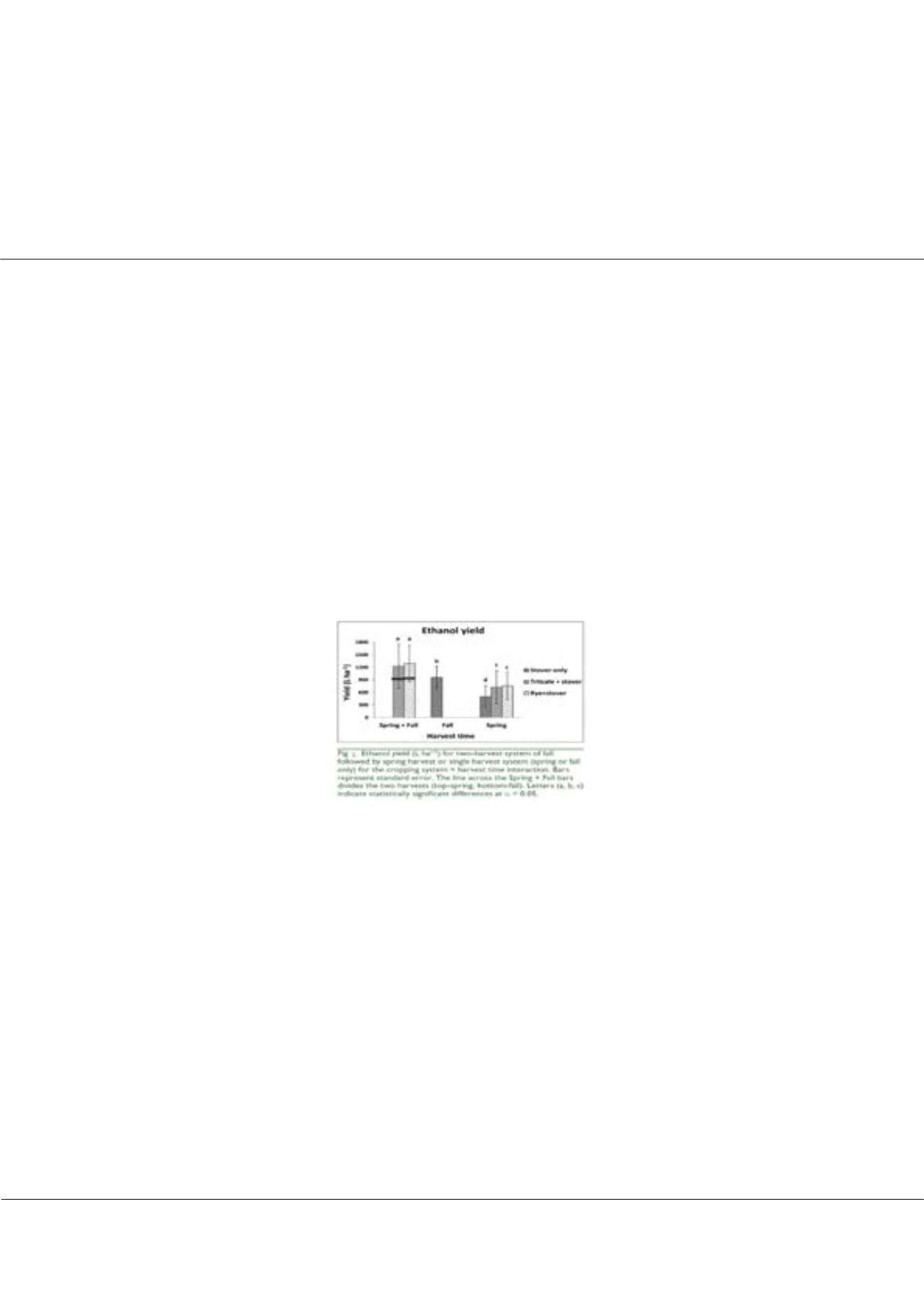

Page 105
conferenceseries
.com
Volume 9
Journal of Bioremediation & Biodegradation
ISSN: 2155-6199
Biofuel Congress 2018 &
Biomass 2018
September 04-06, 2018
JOINT EVENT
September 04-06, 2018 | Zurich, Switzerland
13
th
Global Summit and Expo on
Biomass and Bioenergy
&
12
th
World Congress on
Biofuels and Bioenergy
In field integration of winter cereals with corn stover to improve biomass yield and quality
Kurt D. Thelen
1
and
Monica Jean
2
1
Michigan State University, USA
2
Michigan State University, USA
T
he objective of this study was to evaluate the integration of winter cereal cover crops with corn stover to improve biomass
and potential bioethanol yield. Cropping systems evaluated included 1) a corn stover experimental check; 2) early spring
harvest of winter cereal’s following a fall corn stover harvest; and 3) mixed stands of corn stover and winter cereals harvested
together. Two winter cereals; cereal rye (Secale cereale L.), and triticale (Triticale hexaploide Lart.) were evaluated and no winter
cereal crop was used as the experimental control). Two harvest time factors were evaluated including; a two-harvest system (fall
followed by spring), and a one-harvest system (fall or spring). Spring-harvested corn stover ethanol content [EtOH] was the
greatest (0.201 g g-1) followed by spring-harvested mixed feedstocks of rye + stover (0.175 g g-1) and triticale + stover (0.180
g g-1). Ethanol yield on a land area basis (L ha-1) decreased by 47% when stover-only feedstock was harvested in the spring
compared to the fall. When only considering a single harvest system, incorporation of a winter cereal did improve ethanol
yield by 242 L ha-1 at spring harvest. The two-harvest sequential system of a fall stover harvest followed by a spring, winter
cereal harvest was the most productive with 41.8% greater ethanol yield when compared to the single harvest. Overall, the
incorporation of a winter annual cereal with corn stover improved biomass and ethanol yield relative to stover-only feedstocks.
Recent Publications
1. Jean, M., K.D. Thelen, M. Quigley, D. Pennington. 2017. Improving biomass and ethanol yield by intercropping a
winter cereal with corn. Agron J. 109:1-7
2. Robertson, G. Philip, Stephen K. Hamilton, Bradford L. Barham, Bruce E. Dale, R. Cesar Izaurralde, Randall
D. Jackson, Douglas A. Landis, Scott M. Swinton, Kurt D. Thelen, James M. Tiedje. 2017. Cellulosic Biofuel
Contributions to a Sustainable Energy Future: Choices and Outcomes. Science 356, eaal2324 (2017).
3. Sanford, G. R., Jackson, R. D., Oates, L. G., Robertson, G. P., Roley, S. S., & Thelen, K. D. (2017). Biomass
production a stronger driver of cellulosic ethanol yield than biomass quality. Agron. J. 109:1911-1922. Laurenz,
R., P. Tumbalam, S. Naeve, and K.D. Thelen. 2017.
4. Determination of isoflavone (genistein and daidzein) concentration of soybean seed as affected by environment
and management inputs. J. Sci. Food Agric. Volume 97:10:3342–3347.
5. Tumbalam, P., K. Hard and K.D. Thelen 2016: Integrating winter annual cereal rye or triticale into a corn forage
biofuel production system, Journal of Crop Improvement, 30:5:526-530.
Biography
Kurt D. Thelen, is a Professor at Michigan State University, USA. Dr. Thelen’s research is focused on cropping systems agronomy with an emphasis on bioenergy
and developing crop systems that increase food, feed, and energy production while safeguarding soil, air, water, and biodiversity.
thelenk3@msu.eduKurt D. Thelen et al., J Bioremediat Biodegrad 2018, Volume 9
DOI: 10.4172/2155-6199-C1-015
















